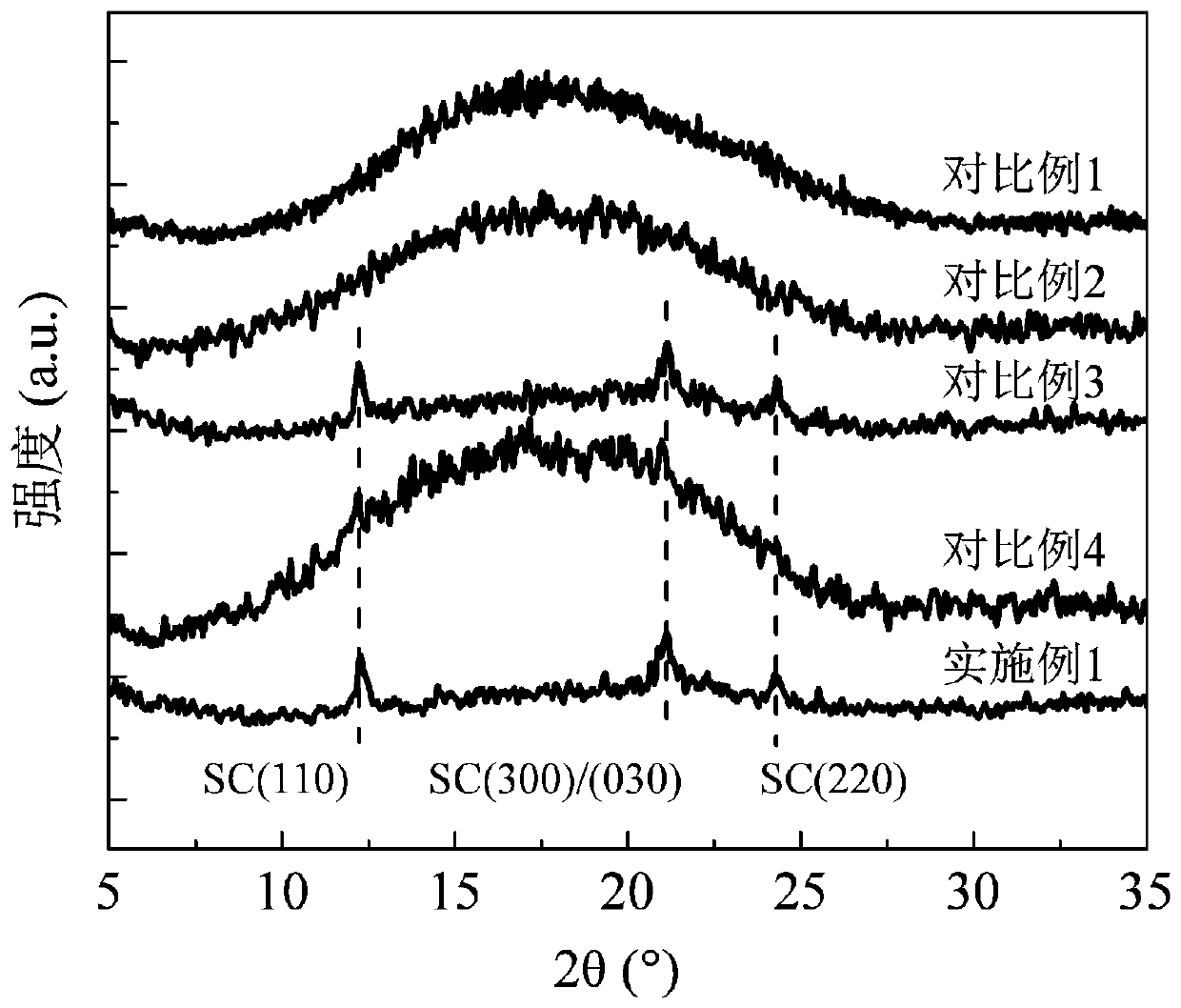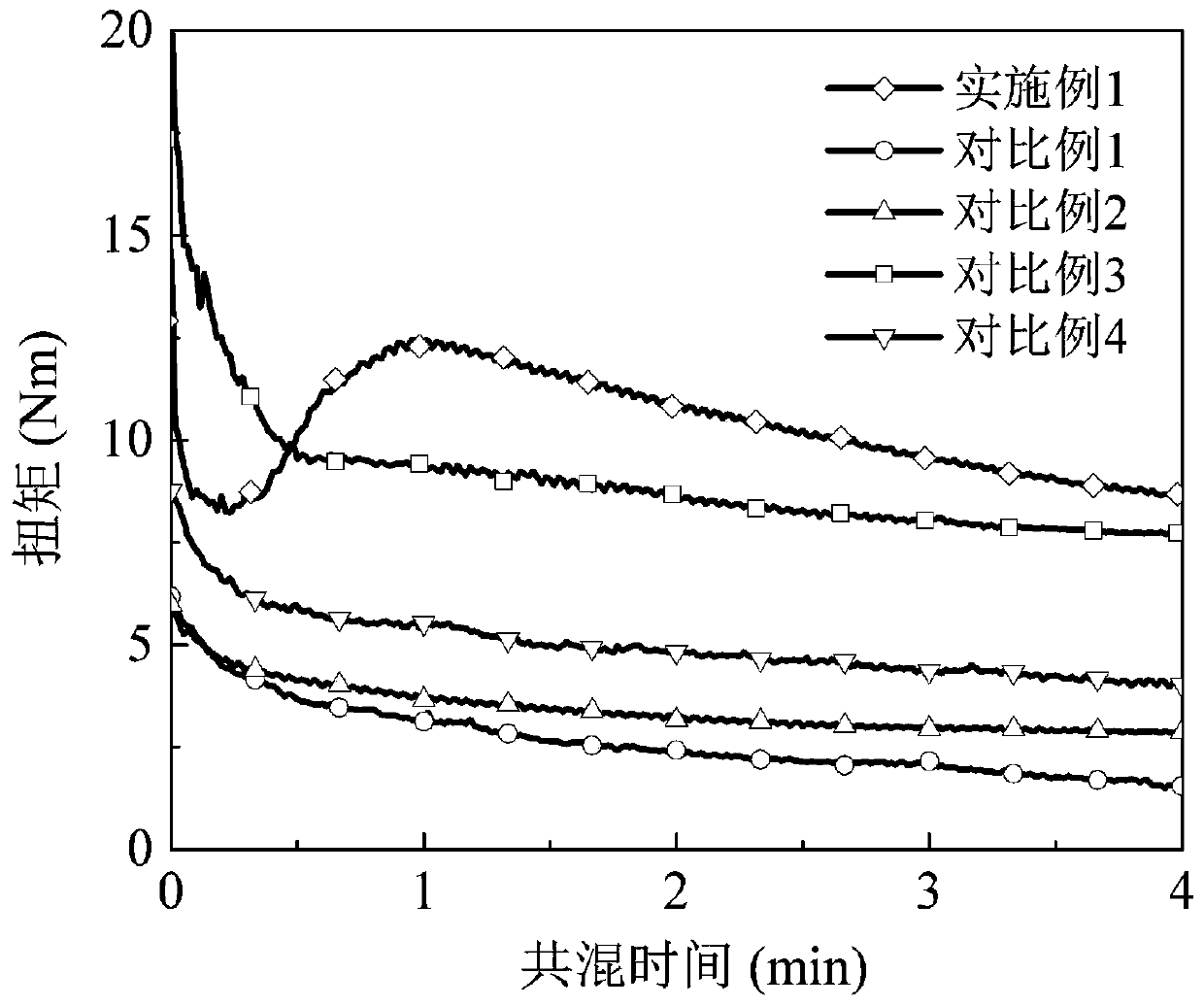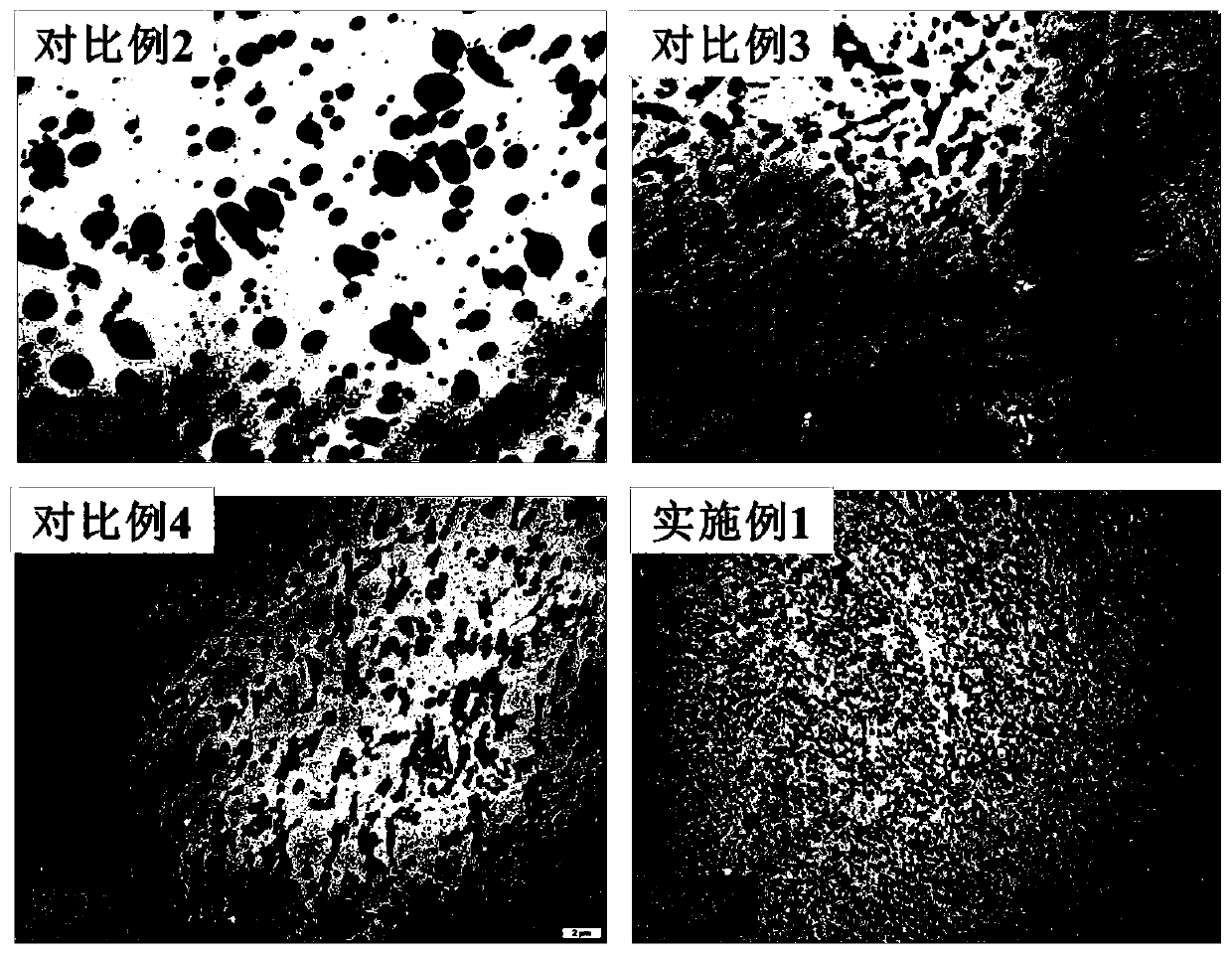A kind of high-performance composite material and preparation method thereof
A composite material and high-performance technology, applied in the field of high-performance composite materials and their preparation, can solve the problems of failing to improve the heat resistance of PLA, failing to improve the crystallization rate of PLA, etc. Improve the effect of interfacial interaction force
- Summary
- Abstract
- Description
- Claims
- Application Information
AI Technical Summary
Problems solved by technology
Method used
Image
Examples
Embodiment 1
[0042] Add 68 parts of L-polylactic acid (number average molecular weight is 130,000, optical purity is 99.0%) and 32 parts of vinyl acetate-based copolymer / dextrorotary polylactic acid blending masterbatch into internal mixer for 4 minutes ( The blending temperature is 190° C.); the obtained blend is hot-pressed at a temperature of 200° C., and then annealed at 100° C. for 2 minutes to obtain a high-performance composite material.
[0043] The preparation method of described vinyl acetate-based copolymer / dextrorotary polylactic acid blend masterbatch is:
[0044] 20 parts of vinyl acetate-based copolymer (vinyl acetate mass content is 60%, glycidyl methacrylate mass content is 3.1%) and D-polylactic acid (number average molecular weight is 90,000, optical purity is 98.8%) 12 parts were added into an internal mixer for melt blending for 6 minutes (the blending temperature was 230° C.).
Embodiment 2
[0046] Add 60 parts of L-polylactic acid (the number average molecular weight is 150,000, and the optical purity is 98.2%) and 40 parts of vinyl acetate-based copolymer / dextrorotary polylactic acid blending masterbatch into the internal mixer and carry out melt blending for 5 minutes ( The blending temperature is 200°C); the obtained blend is hot-pressed at a temperature of 210°C, and then annealed at 90°C for 2 minutes to obtain a high-performance composite material.
[0047] The preparation method of described vinyl acetate-based copolymer / dextrorotary polylactic acid blend masterbatch is:
[0048] 20 parts of vinyl acetate-based copolymer (vinyl acetate mass content is 50%, glycidyl methacrylate mass content is 5%) and D-polylactic acid (number average molecular weight is 120,000, optical purity is 97.5%) 12 parts were added into the internal mixer for melt blending for 5 minutes (the blending temperature was 220° C.).
Embodiment 3
[0050] Add 72 parts of D-polylactic acid (number-average molecular weight is 120,000, optical purity is 97.5%) and 28 parts of vinyl acetate-based copolymer / L-polylactic acid blending masterbatch into internal mixer and carry out melt blending for 4 minutes ( The blending temperature is 190° C.); the obtained blend is hot-pressed at a temperature of 200° C., and then annealed at 110° C. for 3 minutes to obtain a high-performance composite material.
[0051] The preparation method of described vinyl acetate-based copolymer / L-polylactic acid blend masterbatch is:
[0052] 20 parts of vinyl acetate-based copolymers (the mass content of vinyl acetate is 40%, and the mass content of glycidyl methacrylate is 6%) and 8 parts of L-polylactic acid (the number average molecular weight is 90,000, and the optical purity is 98.8%) The portions were added to an internal mixer and melt blended for 6 minutes (blending temperature was 210°C).
PUM
| Property | Measurement | Unit |
|---|---|---|
| impact strength | aaaaa | aaaaa |
| heat deflection temperature | aaaaa | aaaaa |
| optical purity | aaaaa | aaaaa |
Abstract
Description
Claims
Application Information
 Login to View More
Login to View More - R&D
- Intellectual Property
- Life Sciences
- Materials
- Tech Scout
- Unparalleled Data Quality
- Higher Quality Content
- 60% Fewer Hallucinations
Browse by: Latest US Patents, China's latest patents, Technical Efficacy Thesaurus, Application Domain, Technology Topic, Popular Technical Reports.
© 2025 PatSnap. All rights reserved.Legal|Privacy policy|Modern Slavery Act Transparency Statement|Sitemap|About US| Contact US: help@patsnap.com



